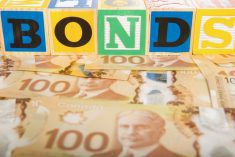After completing the last column, I thought perhaps a better definition of growth and value would be in order as well as defining other common investment styles and strategies.
There are three kinds of market participants often referred to under one umbrella as “investors,” however, I like to distinguish between the three:
1. Speculators orient to buying speculative unproven companies in the hopes of identifying the next big thing and making huge profits quickly. They pay little attention to the underlying value being interested in rapid price movement.
2. Traders buy and sell regularly, attempting to profit from short-term price movements. They often implement rules like selling a stock regardless of value that achieves a specific gain or loss. Day traders take this approach to the extreme, holding for less than a day. It may sound simple, but it’s estimated that 70 per cent of day traders quit after a year and 95 per cent after three, and not because they become wealthy.
3. Investors buy a stock based on fundamentals of the company. They focus on past and expected future profitability. They take a longer-term view with the desire of participating in a company’s success and, unfortunately, sometimes failure.
Read Also

Gentle treatments for pain in the neck
Heading toward year-end, people unknowingly tense up against the cold and busyness, causing neck pain that can often be treated with appropriate support and gentle mobility, athletic therapist Kathlyn Hossack says.
While all of these approaches can create profits, I believe true investors derive the bulk of wealth created, even though they seemingly represent a smaller percentage of market participants. There is no strict line between the three types of market participant, it’s more like a continuum.
Stocks also fall into a continuum with no clear distinguishing lines, from scams to speculative, then growth, value and sunset. Companies (except for scams) pass through the continuum if they move from IPO status to success.
1. Scams exist in the market, are something to be aware of and avoid. A couple of very popular Canadian stock scams were Bre-X and Sino-Forest. Bre-X had no gold and Sino-Forest had no trees. They simply made a lot of people think they did.
It’s hard to know how they got through the security commission and exchange listing requirements. On a positive note, these organizations do a good job and very few scams get through. While I don’t have comparative data, I would suggest the chance of falling into an outright scam is more likely in private markets where the individual is responsible for due diligence.
2. Speculative companies are those with very little track record and limited or no sales, cash flows or profits. They are concept companies. Many will fail to become successful public companies but some will make it, and some will become huge.
3. Growth companies are those which made it through the speculative phase. They tend to be smaller and growing rapidly. They generally pay little or no dividends as profits are reinvested in the business. They have high valuations from price to book, price to cash flow and price to earnings basis.
4. As a company gets larger and more successful, growth slows. It is much harder to grow at a 20 per cent annual clip with $100 billion in sales than with $10 billion in sales. They usually pay higher dividends and reinvest less in the business. They trade at lower valuations from a price to book, price to earnings and price to cash flow basis and are thus referred to as value companies.
5. Lastly, there are sunset industries and companies. When buying value companies one can fall prey to value traps, which are super cheap valuations in a sunset industry.
Some companies will successfully transition to new ventures, but it is a long and arduous process. Many currently consider oil and gas to be a sunset industry, which is possibly why valuations are cheaper than in the past. While I disagree with that opinion it is a consideration. Traditional media and land line-focused telecoms would fall into the sunset category.
Investors are often also categorized as active or passive. Active investors are generally defined as those who invest directly in stocks, like I do, whereas passive investors are those who invest in exchange-traded funds (ETFs).
However, given the S&P 500 ETF is turned over about every 18 months, and my average holding period is over 10 years, am I more active than ETF investors? Like using the word “investor” to describe speculators, I find the definitions of active and passive ill suited.
















